|
|
|
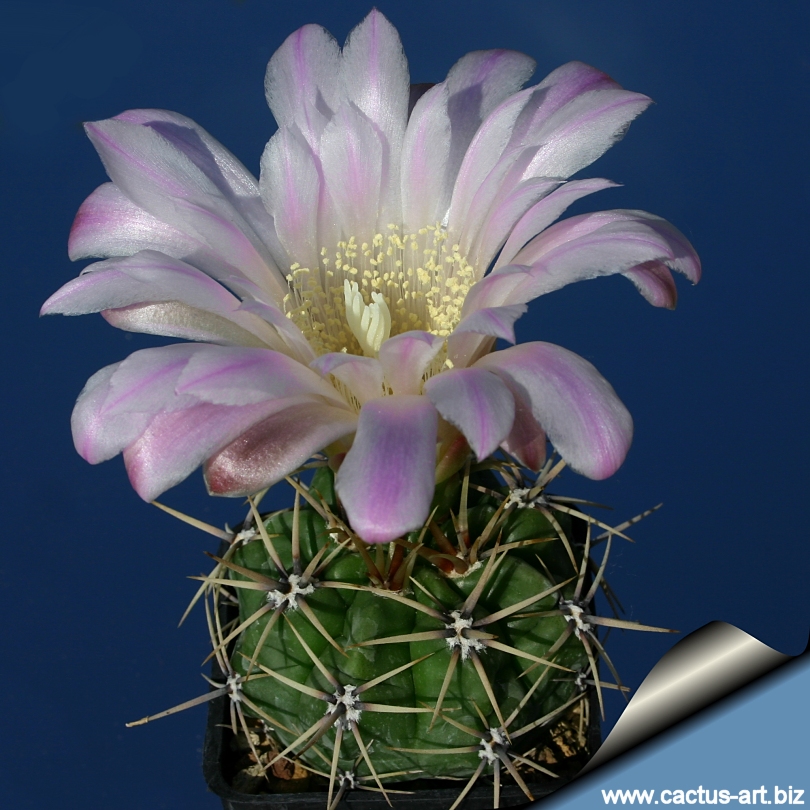
Gymnocalycium achirasense var. orientale
This beautiful species has
extremely large, light, pinkish-white and lavender flowers.
|
Description: G. achirasense
is a (usually) solitary
geophytic cactus.
Stem: Flattened or
globular, dark-green, grey-green to olive green, 5-6 cm in diameter
up to 5 cm in height, but in cultivation it can become 7-8 cm high (or
more) over the years.
Ribs: 12-15
Radial spines: Stout, aggressive, 10 up to 12, but usually
fewer
in young plants, bent against the body.
Central spines: Usually absent or 1 erected
Flowers: Are some of the largest in this genus, often growing
larger than the plant!, 6 up to 7 cm long and broad, whitish, pale pink
to lavender, with a darker
mid-strip.
Fruit: Green
Seeds: Dark brown. |
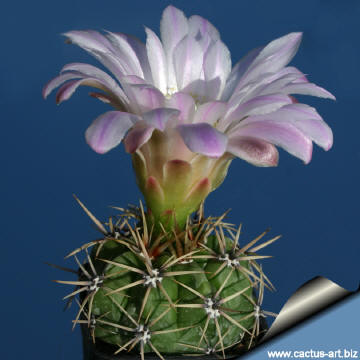 |
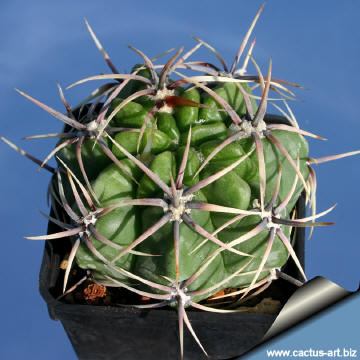 |
|
Cultivation: Summer grower, water regularly in
summer, keep rather dry in
winter. It grows well in
full sun or
light shade.
Photo of of
plants belonging to the Gymnocalycium
monvillei
complex
(This
Taxon has lots of
synonyms ( like many other
gymnocalycium) whit several controversial
varieties and subspecies and comprises a multitude of different
forms, but where each form is linked to others by populations of plants
with intermediate
|
|


Advertising
|
|
|
|
Family:
Cactaceae (Cactus
Family)
|
|
Gymnocalycium achirasense v. orientale
Scientific name:
Gymnocalycium monvillei
subsp. achirasense var. orientale Neuhuber
in Till, H. & Neuhuber, G.
Type: G. Neuhuber 91-341/1157, 4.12.1991, Argentina, Prov.
Cordoba, bei Alpa Corral, 850 m s.m. (WU).
Origin: Argentina (Cordoba)
Conservation status: Listed in
CITES appendix 2.
|
Synonyms:
- Gymnocalycium monvillei var. orientale
- Gymnocalycium achirasense H. Till
& Schatzl 1979 ex H. Till
Published in: KuaS 38(8): 191, 1987
- Gymnocalycium monvillei ssp. achirasense
(H. Till & Schatzl ex H. Till) H. Till,
Published in:
Gymnocalycium 6(3): 102, 1993
- Gymnocalycium horridispinum var.
achirasense (Till & Schatzl) Lodé
Published in: Cactus Aventures International Nr. 27:
29, 1995 und Fichier Encycl. Cact. 16: 1473, 1995
Etymology: The variety name "orientale"
means that it lies in the most eastern part of the habitat.
|
|
|
|
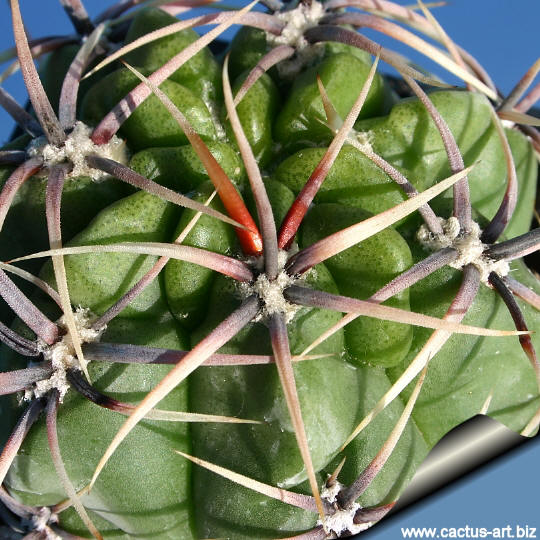
The dark green stem is protected by very aggressive spines.
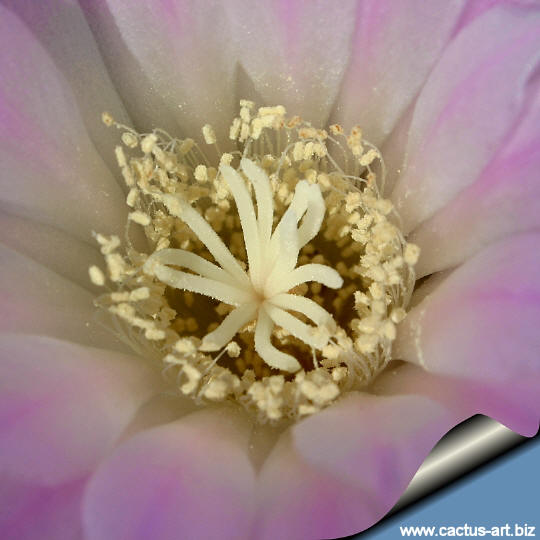
|
|